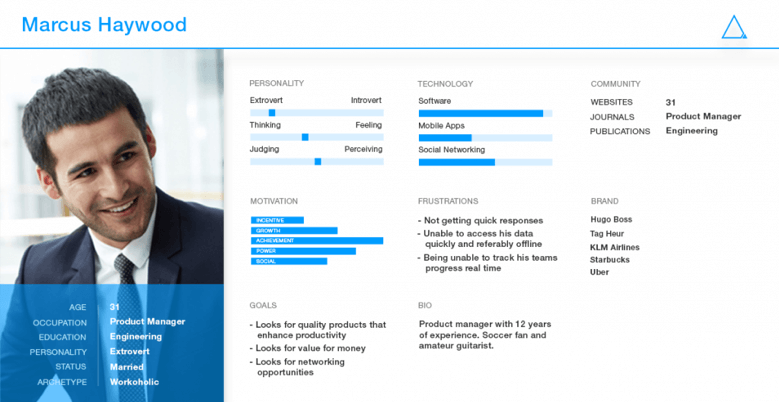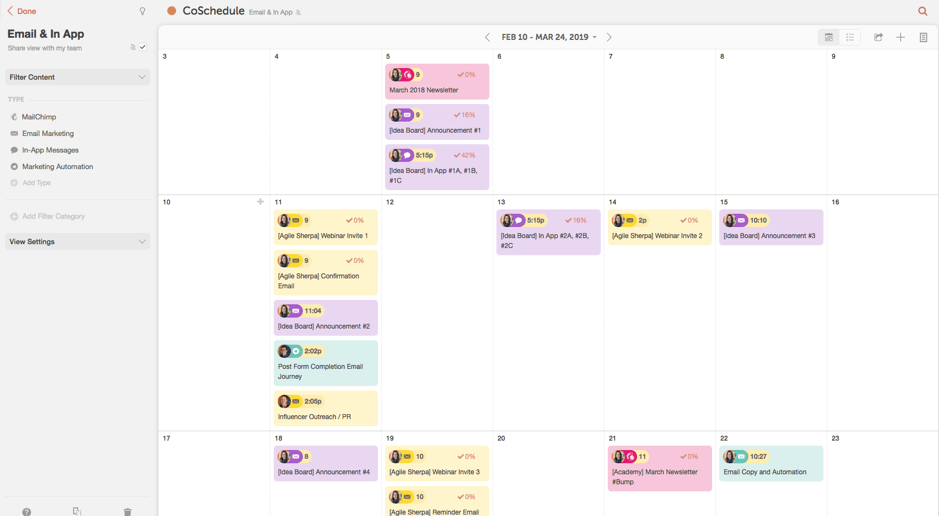[ad_1]
How do you run content marketing campaigns for your business in 2021 when the competition is fiercer than ever?
Content marketing has been proven to produce amazing results for businesses. For instance, a good content marketing plan will generate you three times more leads at a 62% lower cost than traditional marketing. Coming into 2021, knowing that we face a difficult economic recession, now it’s more important than ever to leverage content marketing to improve your ROI.
Core Module

Selecting campaign types and ‘always-on’ activity
Part of the Marketing campaign planning Toolkit
Learn the main types of campaigns that you may need to use to achieve your different marketing goals.
But there’s a little problem: how do you run content marketing campaigns for your business in 2021 when the competition is fiercer than ever?
Frankly, the first task you need to perform is to create a content marketing plan. With a good plan in place, you can take the first step to achieve content marketing success next year.
Unsurprisingly, CoSchedule found that marketers who proactively plan their projects or campaigns are 356% more likely to achieve success. So if you want to be among those who generate great results from content marketing in 2021, start by putting together a documented plan.
In this blog post, I’ll share seven steps to create an effective content marketing plan.
1. Carry out a content audit
To create a content marketing plan for 2021, you need an audit to determine your current performance and understand what works and what doesn’t. This knowledge will then help you plan your content marketing strategy.
While carrying out an audit, some details to check include:
- Top-performing content
- Low-performing content
- Content publishing frequency
- Ranking keywords
The more you understand your current performance – and the reasons behind your performance, whether good or bad – the more knowledge you’ll have to help you develop future content marketing plans.
2. Set your 2021 content marketing goals
As effective as content marketing can be, you most likely won’t get an ROI (return on investment) if you have no target. Without goals, your marketing activities lose focus and it becomes difficult to judge its success or failure.
In most cases, businesses use content marketing to achieve the following goals:
- Brand awareness
- Lead acquisition
- Lead nurturing
- Customer acquisition
- Sales
Whatever goal you have, you need to set those goals properly. Using the SMART (specific, measurable, attainable, relevant, and time-bound) method will go a long way in setting effective goals.
Of course, your goals will depend on the stage of the sales funnel you’re creating content for. Having said that, your goals will determine the type of content you create, how you promote your content, and other activities.
Need a plan to create a winning marketing strategy?
Get started today using a tried and tested step-by-step process to optimize your marketing.

3. Carry out audience research
Another essential aspect of creating a content marketing plan is knowing exactly who you’re targeting with your content.
Who are you trying to deliver your content to? What type of content is their favourite? Do they expect a formal or an informal content style? What types of content should you create? What channels should you be using?
You capture these pieces of information and more by carrying out extensive audience research. After your research, you should have as many details about your ideal customer so that you can put together a buyer/audience personas for each type of ideal customer.
One way to go about your research is to build a profile of the types of individuals you want to convert with your content. Alternatively, you can look at your current customer base and build target profiles from your best customers/leads.
Here’s an example of a buyer persona from Alore to give you a better idea of what a persona should look like:

4. Determine the type of content to publish in 2021
Initially, content was synonymous with the written content. But over the years, various other content formats have grown in popularity.
A point in case is visual content, which has been especially popular. Unsurprisingly, many marketers find success using illustrations alongside text.

Apart from the written content, other formats include:
- Infographics
- Videos
- Podcasts
- Webinars
- Presentations
The type of content you should go for will depend a lot on your particular audience. Ideally, you should use a few different content formats that perform best with your audience.
Use a different content mix depending on the channels you’re using, as well as your audience’s preferences.
Plus, it’s worth experimenting with different types of content to see how that affects your overall results.
5. Create your 2021 content calendar
While producing content to attract your audience, one of the main determinants of your success is consistency. It takes time to achieve results with content marketing and you need to consistently deliver great content experiences in order to grow.
With a content calendar, you can plan your content publishing at your preferred frequency.
Also, your calendar provides you with a visual overview of your content marketing activities. Team members can then easily follow progress on pieces of content, making the entire process more productive for your entire team.
Some details to have in your content marketing calendar include:
- Team members responsible for content
- Stage of the sales funnel
- Content format
- Due dates for content’s first draft
- Publishing date
- Promotion channels
To create a content calendar, you can either try Google Sheets and create it yourself, or you can use a specialized tool. If you need more functionality, a tool like CoSchedule will allow you to plan content across channels and automate publishing as well:

Meanwhile, if you use WordPress, there’s a plugin called “Editorial Calendar” that shows your calendar in your dashboard.
With your content calendar, you can produce content consistently enough to achieve your intended content marketing results.
6. Have a plan for your 2021 content promotion
Creating content is one part of content marketing; another vital part is promoting your content.
Many experts will tell you to spend the same amount of time for the creation and the promotion stage. In fact, Derek Halpern of Social Triggers believes that you should spend 20% of your time creating content and 80% promoting it.
While you have a plan for creating content, you need one for promoting it too. Of course, there are many platforms to promote your content and you should pick the best ones to reach your audience.
Some platforms to promote your content include:
- Guest posts: these are relevant pieces of content on bigger industry sites that can increase your exposure.
- Social media: share your content on social channels where your audience hangs out. This way, it’s easier to reach them.
- Search engines: create and optimize content for keywords your ideal customers are searching for.
- Emails: send emails to your subscribers to inform them about new pieces of content on your website.
- Forums: here, you can answer relevant questions on forum topics and link to your blog posts that provide a detailed answer to the question.
- Advertising: you can spend money to promote important content through social media ads. Another option is Google ads to bring searchers to a landing page where you have an attractive offer.
In your promotion plan, you need to include the frequency of promotion on each platform. It’s vital to note that each platform has best practices when promoting content on them.
7. Measuring your content marketing success and ROI in 2021
To get any result from content marketing, you have to execute a campaign. After taking action, you also need to track your campaign’s performance.
In reality, you need different metrics to track performance for your campaigns. Because when the goals for your campaigns change, so do the metrics used to measure the goals’ success.
To put it in another way, the metrics you track will depend on your goals. Which metrics indicate brand awareness? Which metrics show lead acquisition?
You need to specify these metrics in your campaign plan because this way, you can start following the results as soon as you start your campaign. By doing this, you’ll be able to quickly see if something isn’t working as it should – and optimize your campaign to hopefully improve your results and ultimately, achieve your objectives.
Furthermore, metrics can produce insights to improve the strategy for future campaigns.
Conclusion
Creating a content marketing plan drastically improves your chances of achieving your targets in a timely manner.
You need to know your current performance, understand your audience, use a content calendar, promote content, and track performance. By going through all of these steps and developing a quality calendar, you’ll be able to attract more leads and customers through content marketing in 2021.
[ad_2]
Source link
